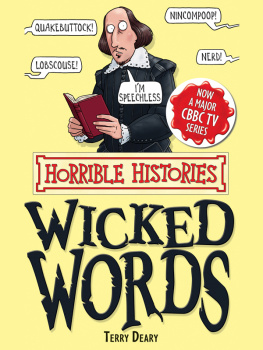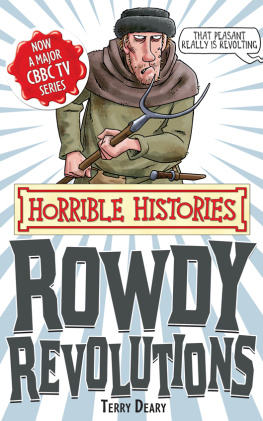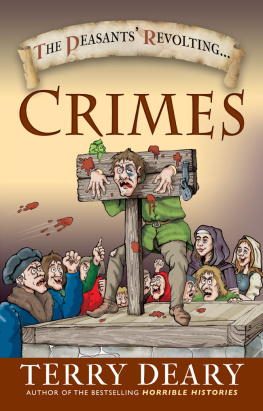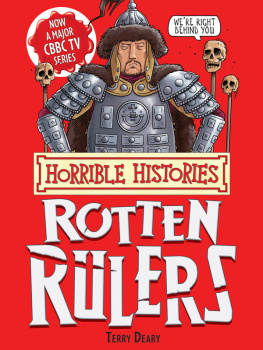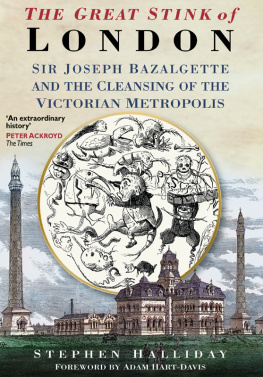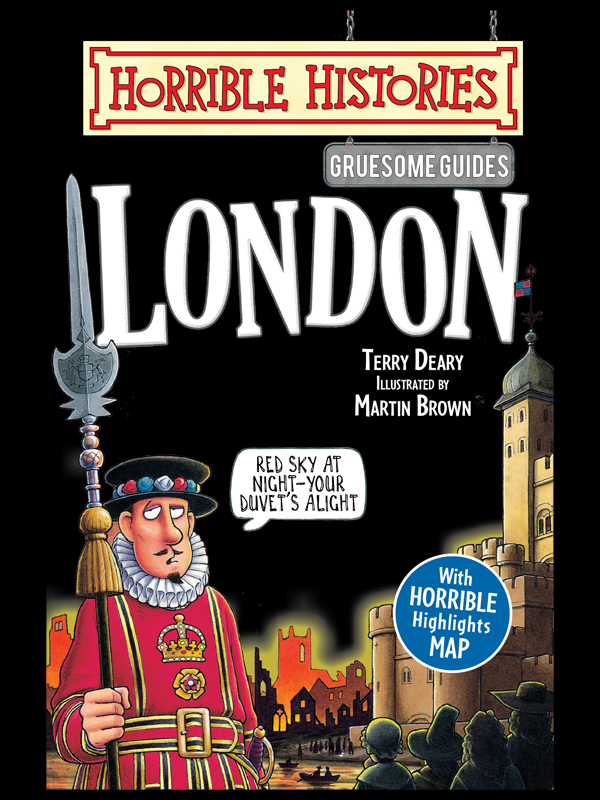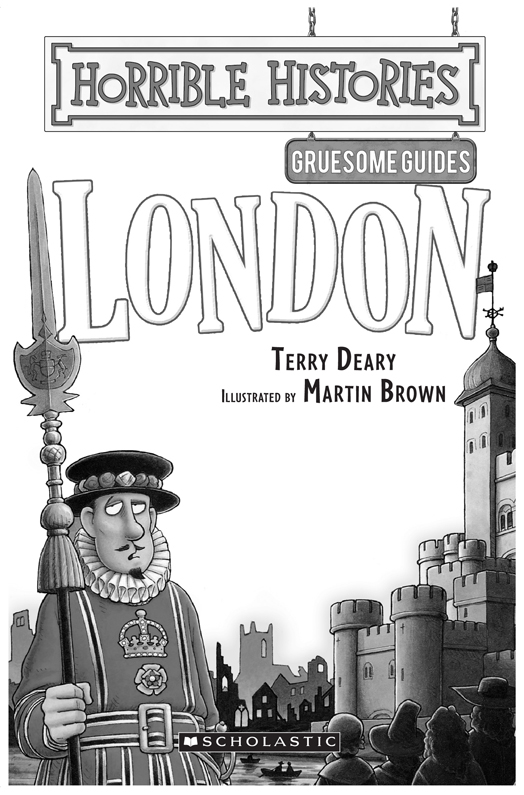For Neal Foster the Magnificent seventh. TD
To Richard Scrivener, with thanks. MB
Introduction
Here are two cities, A and B. Which would YOU like to live in? City A?
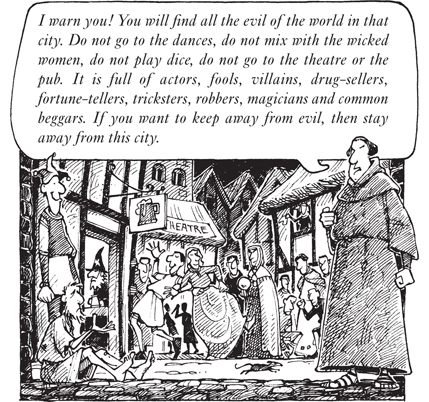
That was written around the year 1190 by a monk called Richard. He also said this place was full of tatterdemalions tramps as ragged as scarecrows.
What a place! You wouldnt want to go there, would you? It sounds like the most horrible place in history. Im sure youd rather live in City B

That was also written around the year 1190 by a priest called William FitzStephen. William did say that this city had a problem with idiots who drink too much. Apart from that it sounds a great place to live.
So travel back in time to 1190. Would you choose City A? Thats Loathsome London. A disgusting and dangerous place.
Or City B? Thats London too. A wonderful and charming place.
Thats the trouble with history. You just dont know who to believe, do you?
To really get a fair and honest picture of the past you need a book that will tell you all the good AND the bad things about a piece of history. But
Horrible Histories warning: This is NOT the book to give you a fair and honest picture of London!
This book will only tell you the horrible bits of Londons history about the bad, not the brave, the horrible, not the happy, the dreadful, disgusting and dirty, not the dear, drippy and delightful.
Lets listen to people like revolting Richard and forget wet William.
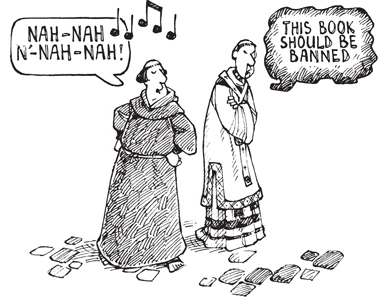
Ancient London timeline
Heres a rough horrible historians guide to ancient London. Its a mixture of the legends, the lies and the truth historians just cant agree which is which.
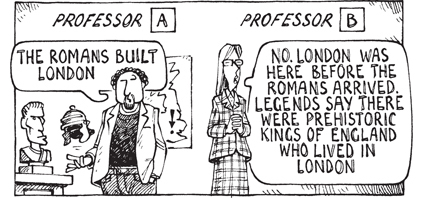
Well maybe Prof B is right. An old legend says that in 1100 BC , a king called Brutus came from Troy and settled in Britain. He travelled around and finally chose a spot on the banks of the Thames to be his capital. He called it New Troy. He was buried at the White Hill where the Tower of London is today. He defeated two giants, Gog and Magog, and took them back to London to guard the gates of the city.

The legend goes on to say that in 863 BC Bladud became King of the Britons the people of Britain. The historian Geoffrey of Monmouth wrote:
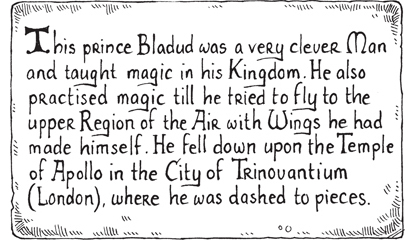
This temple was probably where Westminster Abbey now stands. So if you see a red splat on a Westminster pavement you may have found the blood of Bladud.
BC King Lud rules in London. Lud turns New Troy into a great city with walls and palaces. It was named after him Lud-dum. He is buried in the place we now call Ludgate. (Sounds a Lud of rubbish.)
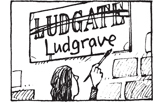
BC Cassivellaunus is King of Britain and faces a new threat the Romans are coming, led by Julius Caesar. Caesar is not welcome so he goes home after just three weeks. He leaves behind his sword, stuck in the shield of Cassivellaunuss brother. The sword is still seen in Londons coat of arms. The red cross is the sign of the English saint, St George, and the dragons are the ones he killed. (Some rather boring people say it is the sword that beheaded St Paul in Rome.)
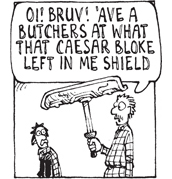
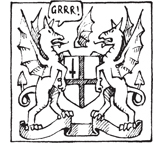
BC Julius Caesar is back maybe he wants his sword. Jules charges through London and forces Cassivellaunus to make peace. But he leaves again before winter storms cut him off from his friends in France. Clever man.

AD The Romans return, this time to stay for a few hundred years. But
AD Queen Boudica rebels. She destroys Colchester then burns and wrecks London.
AD The Romans have rebuilt London with nice new walls to keep bad Brits like Boudica out. They also name this city the capital of Britannia. It still is.
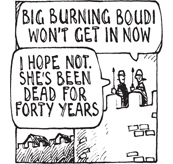
AD Now its the Vikings turn to trash London. They do such a good job that it wont be rebuilt till AD 886.
AD Fire and plague in London. Not the last time these twin terrors will torment Londoners
AD The Vikings are back but THIS time the Londoners give them a good kicking. A monk wrote

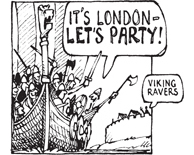
Vicious for the Vikings. But their relatives will be back in
1066 The Normans arrive and Normans were just Vikings who had moved to northern France. Norman leader William the Conqueror is crowned at Westminster on Christmas Day. Riots and slaughter follow. Happy Christmas!
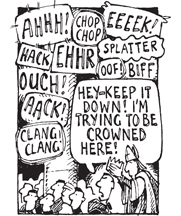
1071 A fire wrecks the wooden buildings so Will the Conk begins building the terrible Tower of London in stone.
Elephant and Castle
If the Londoners had newspapers in 54 BC the front page might have looked like this:

Roaming Roman Julius Caesar has crossed the River Thames. Against all odds the Italian champ beat the brave Brit boys and he took the trunk road!
The London legend Cassivellaunus had been attacking cool Jules for weeks and at last the Caesar had had enough. He marched up to the Thames. Of course there was only one place to cross London. So the brainy Brits barricaded the London crossing with sharp stakes.
But the rotten Roman had the answer. He covered an elephant in armour and put a tower on its back. The jumbo creature waded through the stakes to stake his place in history. Roman soldiers sat in the tower and fired arrows and stones down on the battered Brits.


